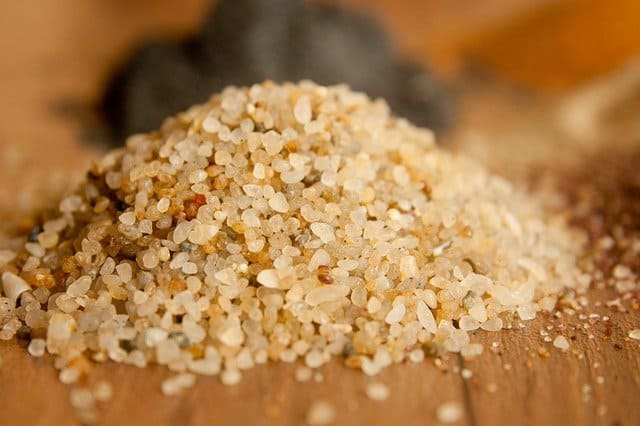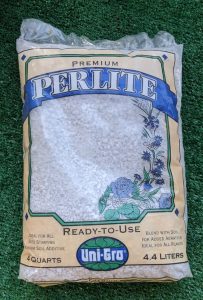Venus flytraps need a particular soil to stay healthy. It is critical to employ the right components. Any sand employed must be suitable for carnivorous plants.
Venus flytraps must grow in nutrient-free, slightly acidic soil. A common soil option is to employ peat or long-fibered sphagnum moss with sand. The sand must be inert and free from added chemicals. Pool filter sand or silica sand are suitable options.
In this article, I will share all the details on choosing the right sand, where to buy it, and how to make Venus flytrap soil. Keep on reading to get the details.
What Kind of Sand Do You Use for Carnivorous Plants?
Venus flytraps are intolerants to nutrients and fertilizers found in the vast majority of potting mixes. Never plant a Venus flytrap in an enriched potting mixture. In that medium, the plant will die very quickly! Instead, make or buy carnivorous plant soil.
A common recipe for making carnivorous plant soil is to mix long-fibered sphagnum moss or peat moss with sand. Both ingredients must be pure, without any added chemicals.
There are a few pure sand options for Venus flytrap soil. Silica sand and pool filter sand are both suitable options. Medium coarse and coarse sand are the most effective options in terms of sizing.

Where to Shop for Sand?
You can buy pure silica sand in gardening stores, hardware stores, nurseries, or online. Always check the tag and preferably ask for help to make sure the sand is pure. Pool stores and department stores commonly carry pool filter sand.
If you find it challenging to find and buy the right sand in brick-and-mortar stores, I recommend the online option. Online carnivorous plant nurseries and retailers in Etsy sell sand and other ingredients for carnivorous plant soil, besides already made mixes. Here is a link to some options on Etsy .
.
The list below includes online carnivorous plant nurseries. Their offering change over time, but they usually sell soil and sand for Venus flytraps.
- predatoryplants.com

- carnivorousplantnursery.com

- californiacarnivores.com

- petflytrap.com

- flytrapcare.com/store/

The Benefits of Sand in Venus Flytrap Soil
Employing sand in Venus flytrap soil brings many benefits. The sand acts as a draining agent. It breaks up the soil and helps with aeration. Over time, it prevents soil compression.
Employing sand when making carnivorous plant soil is beneficial for the plant. The drainage and aeration prevent rotting, molding, and algae. A mix of moss with sand does not compress easily. Venus flytraps can expand their roots and grow through the seasons without impediments from the ground.
It is possible to grow Venus flytraps without sand or another drainage agent. Many Venus flytrap owners employ pure peat moss or long-fibered sphagnum moss to grow their plants.
Venus flytraps can grow healthy in pure moss media. The moss retains moisture, and Venus flytraps thrive in humid environments. However, skipping an element to drain the water is a challenge. Venus flytrap owners must always water their plants appropriately to avoid issues such as root rot. Pure moss does not drain the water fast enough. Instead, the water tends to stay static near the roots, which can be dangerous.
It is possible to skip the sand in your carnivorous plant soil mixture, but it is not recommended. For best results, always employ sand or perlite (more on perlite below).
Other Options Besides Sand for Venus Flytrap Soil
A mixture of moss and sand is optimal for Venus flytraps. But, are there any other options?
Besides sand, Perlite is a suitable option for carnivorous plant soil. A mixture of peat moss and sphagnum moss, and perlite is an effective potting media for Venus flytraps. The ratio between moss and perlite is not critical.
Just as sand, perlite acts as a drainage agent, promotes aeration, and prevents soil compression. Both sand and perlite are as effective for carnivorous plant soil.
The perlite must be pure, never enriched. You can easily buy pure perlite in most plant nurseries. Perlite is commonly used in a myriad of potting mixes. The picture below shows the perlite I employ for my carnivorous plants.
I do not have a preference between sand or perlite in terms of effectiveness. But, I prefer to buy perlite because the grain size is larger, which is easier to handle.

How to Make Venus Flytrap Soil With Sand and Moss
Making Venus flytrap soil is not a complicated task. But, before we get into the details of how to do it, I want to make you aware of an alternate option: buying already made soil. Online or in nurseries, you can buy carnivorous plant soil. It is a slightly more expensive option, yet it is practical.
Now, let’s learn how to prepare carnivorous plant soil from scratch.
When employing sand and pure moss for Venus flytrap soil, you can choose between long-fibered sphagnum moss or peat moss. Both work similarly.
To mix an prepare the soil you will need 4 main elements:
- The sand
- The moss
- A mixing container
- Distilled, reverse osmosis or rainwater
The first two elements are straightforward; you need both the sand and the moss to prepare the soil. A large mixing container is handy to complete the task. And, the water is required for moistening the soil. The water needs to be pure. Never employ tap water or bottled water; it can kill your plant. Distilled water, reverse osmosis water, and rainwater are the only options for Venus flytraps.
The potting media for Venus flytraps should be at least 20% sand and the rest moss. You can employ as much as a 50-50 ratio between sand and moss. A higher ratio of sand or perlite is beneficial.
Here are a few recipes to make good carnivorous plant soil for Venus flytraps. Remember, the ratios do not need to be perfect; it is just an estimate.
- 4:1 or 3:1 or 2:1 or 1:1 ratio of peat moss and silica sand
- 4:1 or 3:1 or 2:1 or 1:1ratio of sphagnum moss and silica sand
How to Prepare the Soil
Finally, this is how to prepare the soil:
- Add the desired ratio of sand and moss in a mixing container.
- Mix both elements until they are fully combined
- Moisten the soil mix until it is humid all around.
- Place the soil in the desired pot and shake the pot to set the soil.
After the soil is set in the pot, you can go ahead and pot your plant. The potting and repotting process can be delicate. This article can guide you through the details and give you tips: Venus Flytrap Potting and Repotting Guide .
.
Also, this video shows the steps to repot a Venus flytrap, including preparing the soil.
Besides choosing the appropriate soil, pay attention to the pot you use. Some materials leach minerals into the ground. Here are my Venus fly trap pot recommendations .
.
Can Venus Flytraps Grow in Sand?
Sand is a suitable ingredient for carnivorous plant soil. However, using sand as the pure potting media for Venus flytraps is not advised.
Venus flytraps can not grow healthy in pure sand media. The sand might be pure and do not contain any harmful minerals, but the media is far from optimal. Venus flytraps require humid soil at all times. Sand drains water quickly and lets the moisture escape.
Venus flytraps need to grow in moist media. They require plenty of sunlight and water throughout their lives. These plants thrive in humid environments. In general, owners should never let their soil go completely dry.
When Venus flytraps are not watered often enough, and the conditions are dry, the plants start to get droopy and weaken (in this guide I can teach you exactly how much water do you need for Venus flytraps). (in this guide I can teach you exactly how much water do you need for Venus flytraps).. The lack of water can kill Venus flytraps very quickly. For that reason, peat moss and long-fibered sphagnum moss are a great fit for Venus flytrap soil.
The moss retains moisture, while the draining agent (sand or perlite) keeps the water flowing. There is a balance between the moss and sand or perlite. It is possible to employ pure moss to grow Venus flytraps. But, pure sand or perlite as the sole potting media are unfitted options.
Avoid making any critical mistakes when growing Venus flytraps by doing some prior research. Growing Venus flytraps is fun, but it can be a challenge without the right guidance. To simplify the learning process, I wrote this article on Venus flytrap care.
on Venus flytrap care.

